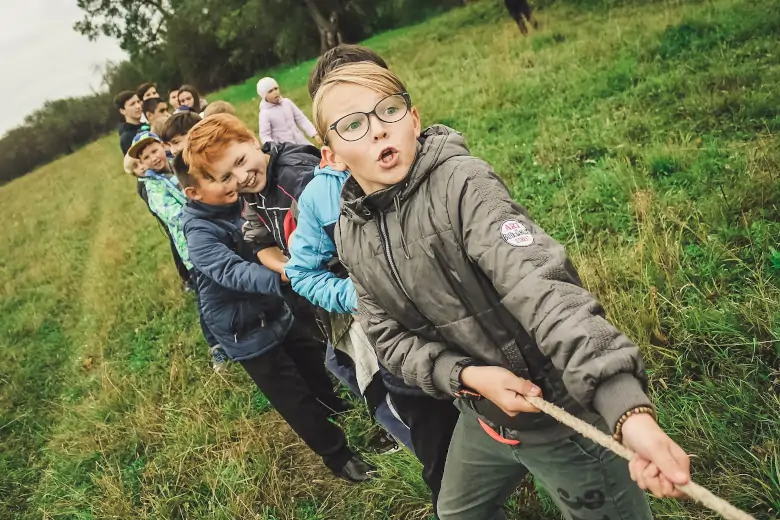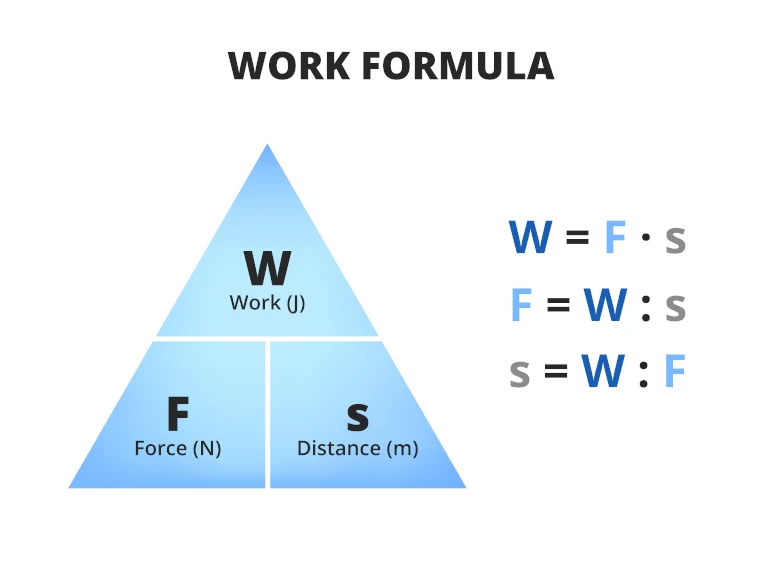Energy And Work Done
In this article, the following are the objectives that will be discussed.
- Understand what energy is.
- Understand what work done is.
- State some examples of work being done and no work being done.
- Calculations involving work done.
Energy
Energy is the ability to do work. Without energy, machines and people will not be able to do work.
The SI unit of energy and work done is joule (J). One joule of energy is needed to do one joule of work.
In order for work to be done, there are two conditions that must be met:
- A force acts on an object.
- The object moves in the same direction as the force.
If any one of these two conditions is not met, no work is done.
Examples of work being done
A. pushing an object

Image Credits: unsplash - Peter Trones
B. pulling an object

Image Credits: unsplash - Anna Samoylova
C. a falling object

Image Credits: unsplash - Bithin raj
In the above scenarios, as a force is applied onto the object and the object is moving in the direction of the force, we can consider that work is being done.
Examples of no work being done
- carrying an object

Image Credits: unsplash - René DeAnda
- holding an object

Image Credits: unsplash - Jakob Owens
In the scenarios shown above, there is no work done as the movement of the object is perpendicular to the direction of the force.
Formula to determine work done
As mentioned earlier, in order for work to be done, a force must be applied to an object and the object must move in the same direction as the force.
Therefore, the formula to determine the work done is as follows:
work done (J) = force (N) × distance (m)
Revision questions
Here are some questions for us to look into on the objectives of this article.
Question 1:
An object with a mass of 20 kg is being lifted up to reach a height of 10 m. Calculate the work done to lift up the object.
Solution:
weight of object = m × g
= 20 kg × 10 N/kg
= 200 N
∵ distance = 10 m
work done = 200 N × 10 m
= 2000 J
*Note: g is the gravitational field strength to which is approximately 10 N/kg on Earth.
Question 2:
Determine whether the statement below is true or false.
'Energy is the ability to push.'
- true
- false
Solution:
(2) false
Solution explanation:
Energy is the ability to do work.
Question 3:
Determine whether the statement below is true or false.
'Work is being done when the object moves perpendicular to the force applied on it.'
- true
- false
Solution:
(2) false
Solution explanation:
In order for work to be done, the object must move in the same direction as the force applied on it.
Question 4:
Which of the following situations is work being done?
- carrying a heavy book
- pushing a box so that it moves by 1 m
- holding a heavy bag
- pushing a wall
Solution:
(2) pushing a box so that it moves by 1 m
Solution explanation:
In order for work to be done, a force must be applied to an object and the object must move in the same direction as the force. As a force is applied onto the box and the box moves 1 m in the direction of the force, work is being done.
Question 5:
Which of the following situations is no work being done?
- reeling in a fish
- pushing a wheelbarrow so that it moves by 10 cm
- holding a heavy bag
- kicking a ball
Solution:
(3) holding a heavy bag
Solution explanation:
In order for work to be done, a force must be applied to an object and the object must move in the same direction of the force. There is no work done as the movement of the heavy bag is perpendicular to the direction of the force.
Question 6:
Calculate the work done in the following situation.
An elevator carries a person with a mass of 70 kg to the 7th floor, which is 20 m high.
- 490 J
- 1400 J
- 4900 J
- 14000 J
Solution:
(4) 14000 J
Explanation:
work done (J) = force (N) × distance (m)
weight of object = m × g
= 70 kg × 10 N/kg
= 700 N
∵ distance = 20 m
work done = 700 N × 20 m
= 14000 J
*Note: g is the gravitational field strength to which is approximately 10 N/kg on Earth.
Question 7:
Calculate the work done in the following situation.
A person exerts a pushing force of 500 N onto a huge box, causing it to move by 4 m.
- 200 J
- 2000 J
- 100 J
- 1000 J
Solution:
(2) 2000 J
Solution explanation:
work done (J) = force (N) × distance (m)
= 500 N × 4 m
= 2000 J
Question 8:
Calculate the work done in the following situation.
An 80 kg bag is falling from the 10th floor, which is 30 m high.
- 800 J
- 2400 J
- 800 J
- 24000 J
Solution:
(4) 24000 J
Explanation:
work done (J) = force (N) × distance (m)
weight of object = m × g
= 80 kg × 10 N/kg
= 800 N
∵ distance = 30 m
work done
= 800 N × 30 m
= 24000 J
*Note: g is the gravitational field strength to which is approximately 10 N/kg on Earth.
Question 9:
Calculate the work done in the following situation.
A person with a mass of 80 kg exerts a pulling force of 1000 N onto a trolley. The trolley, with a mass of 40 kg, moves 5 m away from its original position.
- 800 J
- 200 J
- 2000 J
- 5000 J
Solution:
(4) 5000 J
Solution Explanation:
work done (J) = force (N) × distance (m)
= 1000 N × 5 m
= 5000 J
Test Yourself
Which of the following shows that work has been done on an object?
I. The object moves from rest.
II. The object remains still.
III. The object changes shape.
IV. The object moves and returns to the same position.
Choose the correct option
In all cases except II; we can see work being done on the object through its motion or a change in the shape of the object (work done on the object is changed into elastic energy changing its shape).
Ans: (D) I, III and IV only
Non-contact forces are forces that act between two objects that are not physically touching each other. Which of the following is an example of a non-contact force?
A gravitational force is experienced by any mass in a gravitational field. The bodies need not to be in contact to experience gravitational force.
Ans: (D) gravitational force
During a volcanic eruption, which of the energy(s) below is/are involved?
When magma is erupted from the volcano, magma glows due to it being very hot. Thus, heat and light energy are both given out.
The magma is also being ejected to a high height. When this magma falls from such a high height its gravitational potential energy gets converted into the kinetic energy.
Ans: (D) all of the above
Which of the following is incorrect about weight?
I. It is the measure of gravitational force exerted on an object.
II. S.I. unit of weight is newton.
III. It does not change with a change in location.
IV. It can be measured using a spring balance.
Weight is the measure of gravitational force exerted on an object. It changes from place to place, depending on the gravitational field strength of the location.
Ans: (III) It does not change with change in location.
The mass of an astronaut is 80kg on Earth. He then travels to the Moon which has a weaker gravity. What is his mass on the Moon?
The mass of a body is a constant and does not change with location. It is not dependent on the strength of gravity.
Ans: (C) 80 kg




 SG
SG  VN
VN 
















